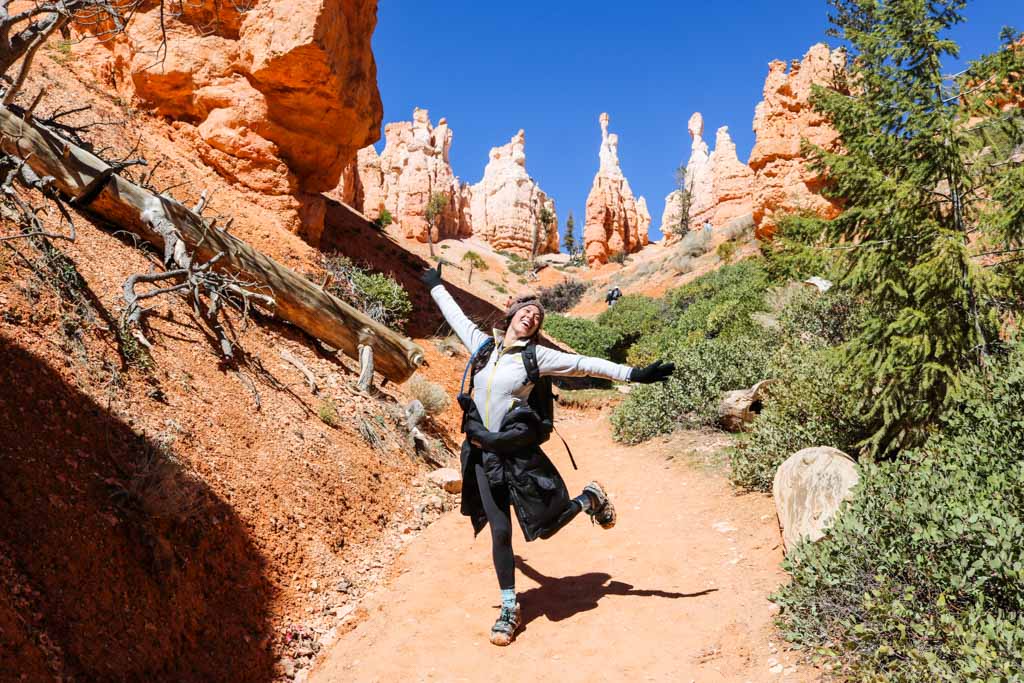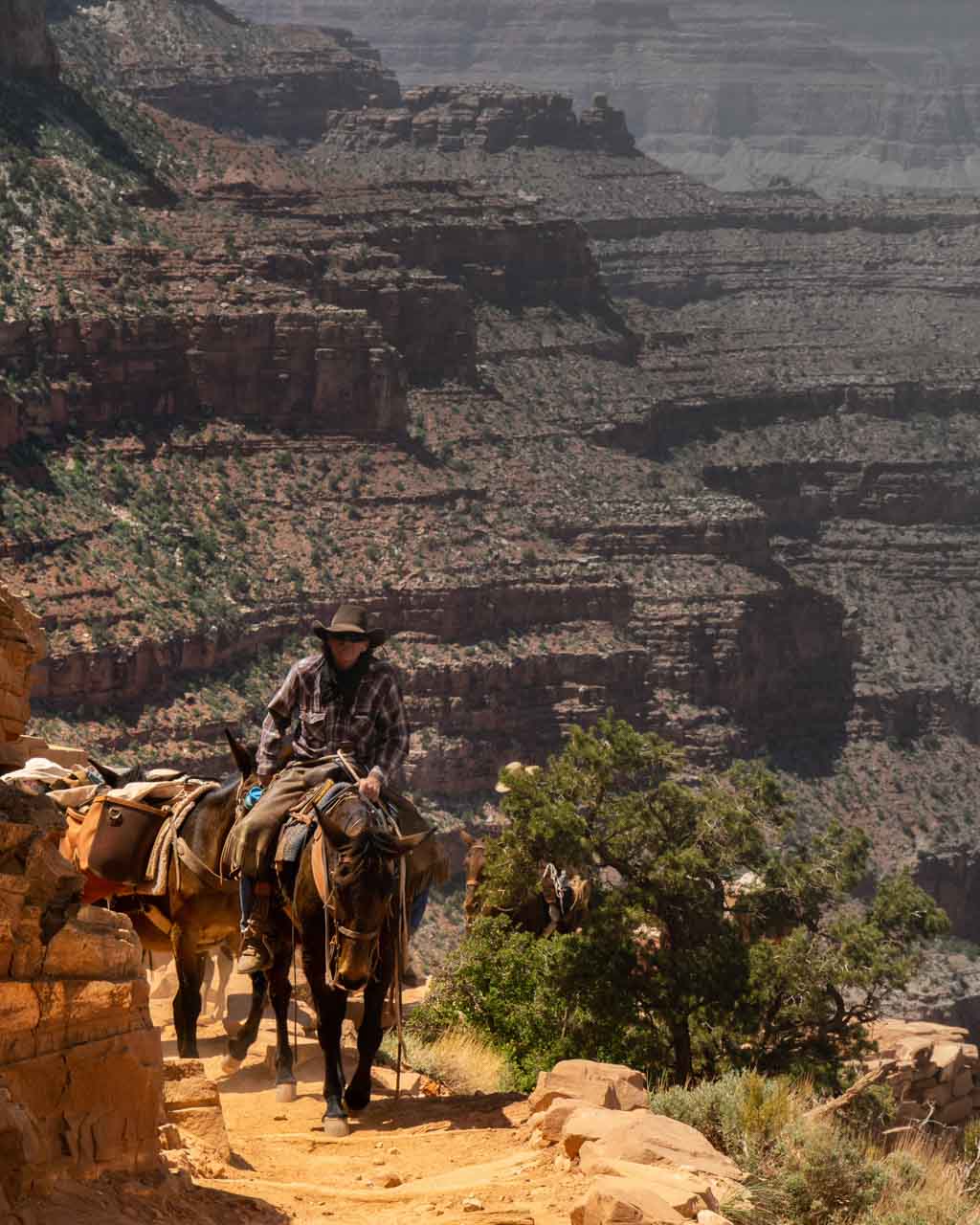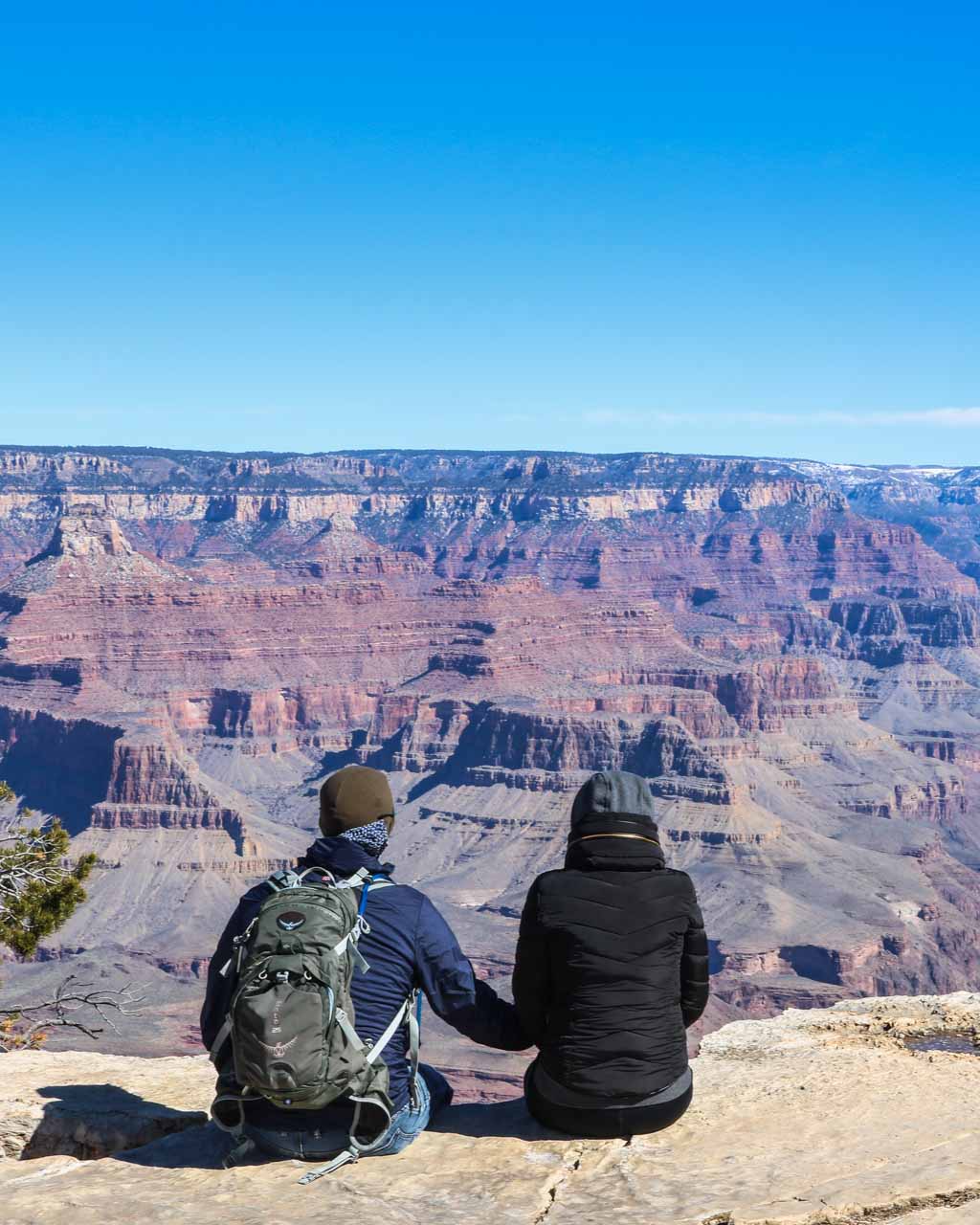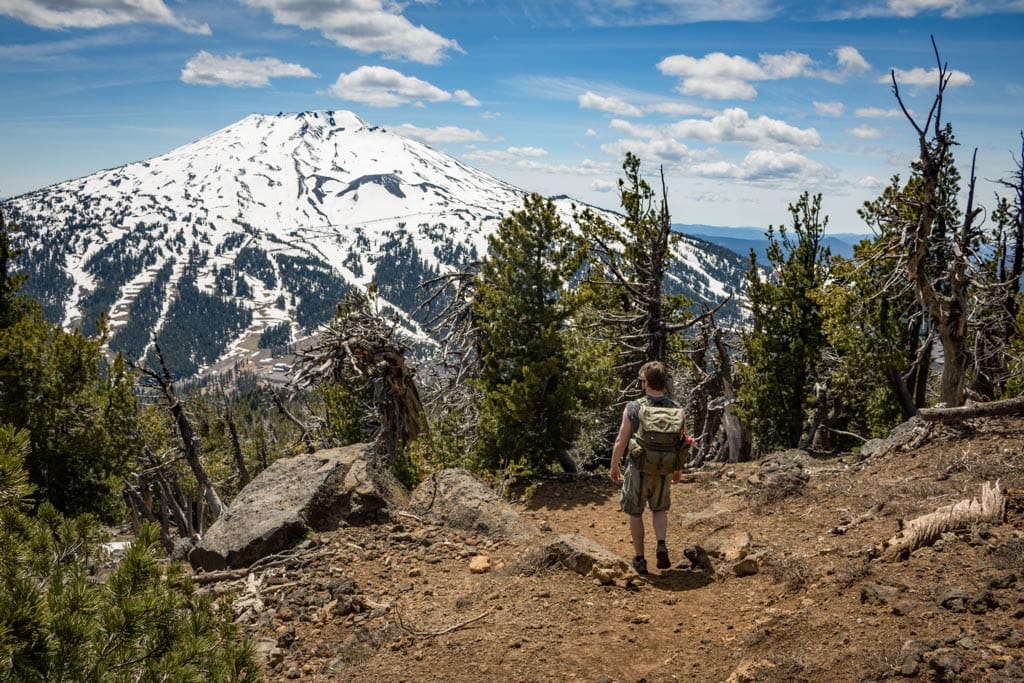Trail Etiquette: 10 (Un)written Rules of Hiking
This hiking etiquette post contains affiliate links. You can read more about our Terms of Use / Disclosure here.
Annual national park visitation numbers have passed the 300 million mark for a few years, showing that getting outdoors is more popular than ever.
While it’s definitely a good thing that more people enjoy spending time outside, that evolution can have negative consequences, too. For example, larger crowds mean increased pressure on the environment and potential stress to wildlife.
Since some people are just casual park visitors, and not seasoned backcountry travelers, they might not be aware of the written and unwritten hiking rules. Just like in other areas in life, there are a number of things that are expected of you when you’re hiking.
Known as trail etiquette, this is a set of regulations, conventions, good behavior and common courtesies to others while hiking.
So, whether you’re hiking solo, with a partner or as part of a group, it’s important to adhere to these hiking guidelines.
Following hiking etiquette is the best way to show respect for both others and nature, act as a steward of the land, and simply set a good example.
Hiking Etiquette: 10 Rules for How to Behave on the Trail

1. Leave No Trace
This is one of the most important hiking etiquette rules. Leave No Trace is a concept that involves seven principles to live by when spending time outdoors.
The core principle as, as the name indicates, to leave everything as you found it (or better). Don’t take anything with you and don’t leave anything behind. The general rule is to “pack it in, pack it out.”
You can find an elaborate overview of all seven Leave No Trace principles here.
2. Trail Etiquette Right of Way
Who has the right of way on a hill? The unwritten right of way rule is that people hiking downhill should yield to uphill traffic.
Although this is not an official regulation, it’s common courtesy to step aside if you meet hikers coming uphill. It’s the polite thing to do.

3. Hike on the Right, Pass on the Left
In many ways, trails are very similar to roads. On wider trails, the general rule is to hike on the right and to pass, or let people pass, on the left.
If you’re hiking faster than a person in front of you and would like to pass, a friendly “on your left!” lets them know you’re about to pass.
4. Stay on the Trail
To prevent erosion, it’s critical that all hikers stay on the trail. By going off trail, you could damage or even kill plants and animals, which has a negative impact on the ecosystem you’re enjoying in the first place.
The only exception is if you absolutely have to step off the trail when yielding to other trail users.

5. Keep Your Distance from Wildlife
Viewing wildlife in their natural habitat is one of the great joys of hiking in national parks. However, hiking rules and trail etiquette demand that you always keep your distance from wildlife.
All national parks have regulations about this. These are actual federal laws. Not only does it negatively influence an animal’s behavior when you get too close, approaching wildlife can be very dangerous.
Moreover, it’s actually illegal in many places. You can get fined for harassing or approaching wild animals.
The common rule is to stay at least 25 yards away from most wildlife, including moose, elk, mountain goats and deer, and minimum 100 yards from predators like wolves, mountain lions and bears.
6. Acknowledge Other Hikers
When you come across other hikers on the trail, greet them with a simple “hi!” or “how’s it going?” This creates a network of positivity along the trail, an enjoyable atmosphere that makes everyone’s hiking experience just that tiny bit better.

7. Trail User Hierarchy
Some trails are open to other recreationists besides hikers. If you’re using a multi-use trail, familiarize yourself with the trail hierarchy.
Trail etiquette rules say that cyclists yield to hikers, horses and other pack animals; and hikers yield to horses and pack animals.
The trail right of way hierarchy is as follows:
- Horses and pack animals have the right of way over…
- Hikers have the right of way over…
- Cyclists
8. Don’t Stack Rocks, Don’t Destroy Cairns
When hiking, you may come across stacks of rock on or on the side of the trail. These are known as cairns.
Sometimes, they’re put there by park management to mark the trail, often on rocky terrain that lacks other features. In bad weather, they can help hikers stay on trail. Don’t topple them over.
Often, however, they’re put there by other hikers. While it’s tempting to put another rock on top, don’t. Replacing rocks, however insignificant it might seem, does have an effect on the environment. Just leave rocks and stones be—it’s part of the Leave No Trace principles.

9. Enjoy the Sounds of Nature
It’s common decency to not shout or listen to music while hiking. Keep noise from electronic devices at an absolute minimum. It disturbs the peace of the natural environment, can affect wildlife behavior and is simply annoying to fellow hikers.
Instead, listen to the sounds of nature. There’s plenty to listen to, from leaves rustling in the breeze to songs of birds and the roar of waterfalls.
10. Always Be Aware of Your Surroundings
Finally, the last hiking etiquette rule is to be aware of your surroundings. Listen and look.
When hiking in national parks, realize that you’re a visitor who’s entering the natural home of various different animals.
Read up on what to do when you encounter wildlife on the trail:
- Black bear encounters while hiking
- Grizzly bear encounters while hiking
- Mountain lion encounters while hiking
- Rattlesnake encounters while hiking
- Bison encounters while hiking
- Elk encounters while hiking
- Moose encounters while hiking

Abiding by these 10 written and unwritten hiking etiquette rules will ensure that you have the best possible experience when visiting America’s amazing national parks and other natural destinations.
And remember, when you’re not completely sure about applicable rules for hiking, just use common sense.
Respect fellow hikers, as well as plants and animals. Leave everything as you find it (or better!). Don’t be loud. Say hello. Yield to uphill traffic. Stay on the trail. Learn about wildlife. But most of all… Enjoy!








I like #6. It can really add to your experience visiting a park and having a positive interaction or conversation with another park goer. I know some of my fonder memories in my travels involved the interactions with people 🙂
Right? Just a simple nod or ‘hi’ when passing someone on a trail can improve everyone’s experience so much.